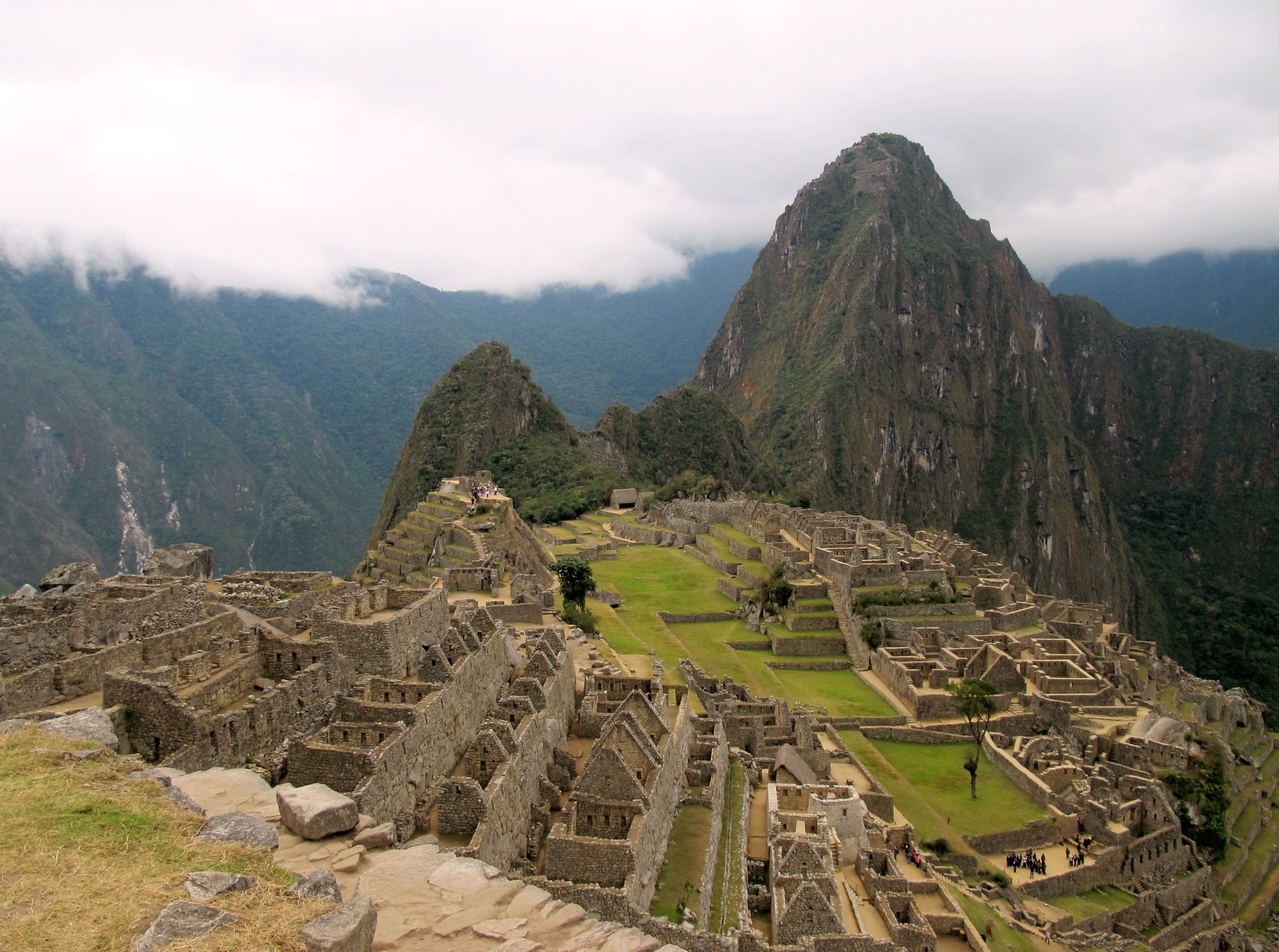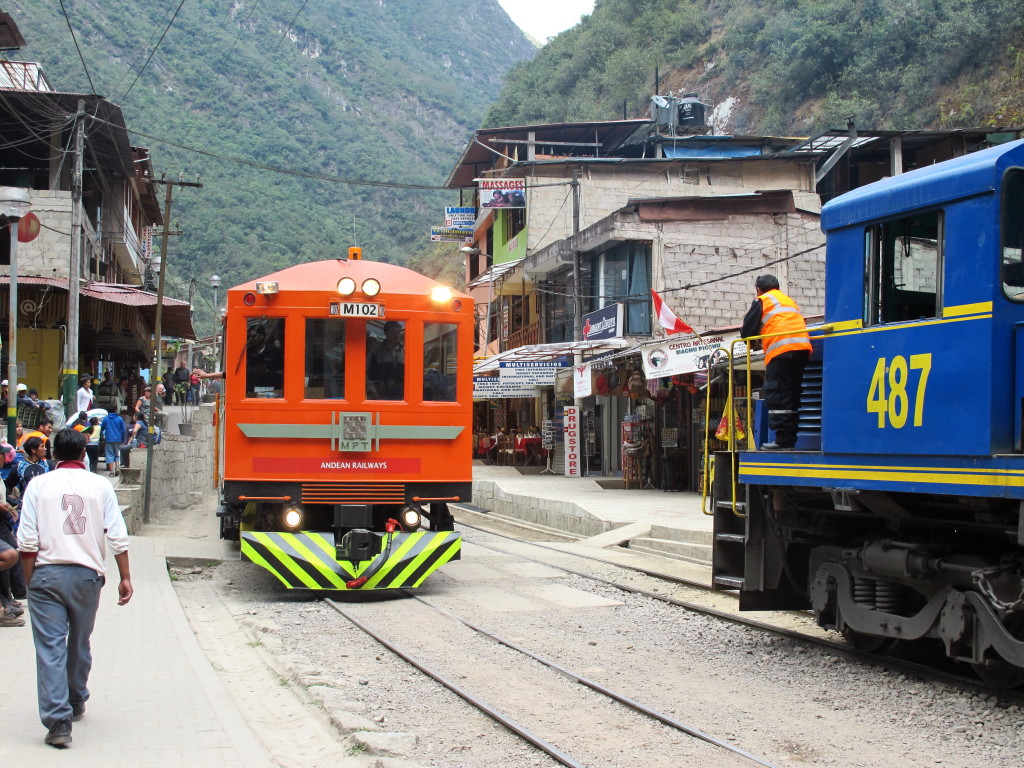One of the most impressive hiking tours I have ever made was the short Inca Trail or Camino Real in Peru that leads to the famous city of Machu Picchu.
Six years ago I traveled through Bolivia and Peru with a small group of nature lovers. It was one of our wishes to hike the world-famous Inca Trail. However, the traditional 4-day Inca Trail, 45 km long, would certainly be too heavy and that is why we decided to book the Camino Real that joins the classical route at “Kilometer 104”. Maybe this is an “easy tour” by Andean standards, but I think that most European hikers consider it at least “moderate”, due to the steep climbing and the altitude of the trail (between 2400 and 2700 meters above sea level). You should really be fairly fit for this trek and don’t even think about it, when you suffer of fear of heights!
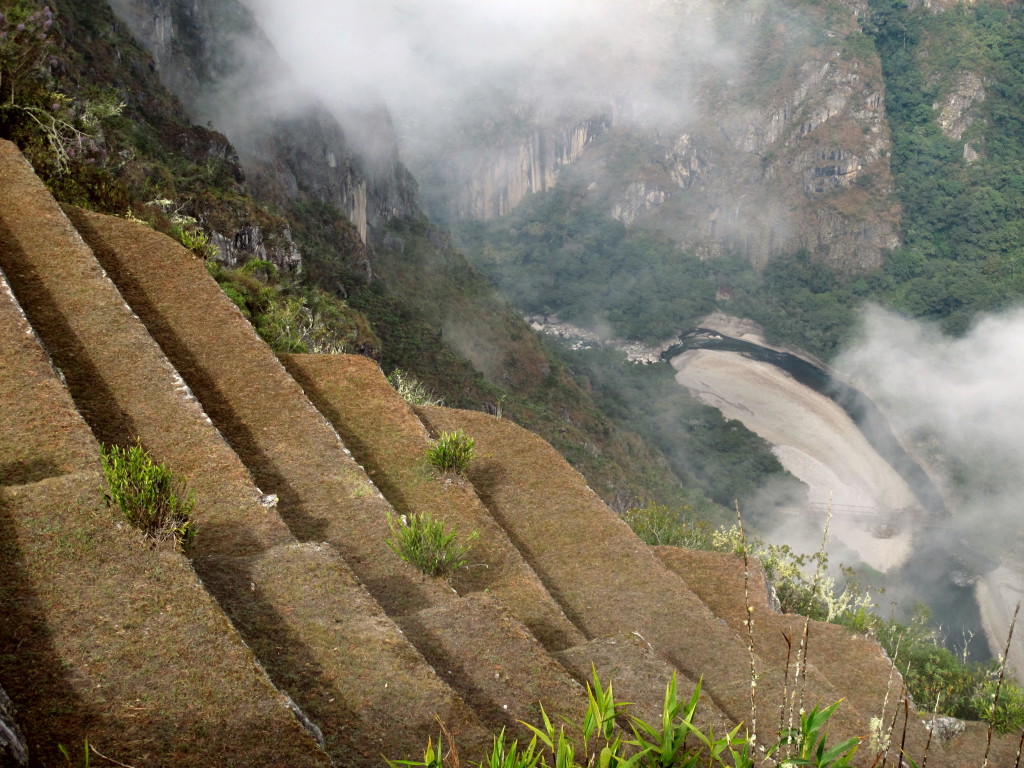 Very early in the morning, we were transferred from our hotel in Cusco to the Ollantaytambo train station. It was a picturesque train ride that lasted around three hours until we arrived at the start of our trail – Kilometer 104, where we crossed the bridge over Rio Urubamba. The hike went upwards and further upwards for around four hours – and there were many, many steep stairs to climb (photo 2). The abysses were yawning, but the views were absolutely breathtaking.
Very early in the morning, we were transferred from our hotel in Cusco to the Ollantaytambo train station. It was a picturesque train ride that lasted around three hours until we arrived at the start of our trail – Kilometer 104, where we crossed the bridge over Rio Urubamba. The hike went upwards and further upwards for around four hours – and there were many, many steep stairs to climb (photo 2). The abysses were yawning, but the views were absolutely breathtaking.
After our climb, we arrived at the Inca site of Wiñay Wayna, which means: Forever Young. Many people consider this set of ruins as one of the most impressive sites on the trail. I though it amazing that people once lived here, worked here on the numerous agricultural terraces.
One and a half hour later we passed the Inti Punku (Sun Gate) at an altitude of 2730 m. There we had the first dramatic, panoramic view of Machu Picchu – an unforgettable sight! Walking down the last part of the trail towards the ancient city itself was surrealistic and impressive. Yes, after a hike of almost seven hours and a difference in altitude of 600 meters upwards, I was finally in Machu Picchu, the lost city of the Incas! But it was late and the last bus took us down to Agua Calientas, where we spent the night in a hotel.
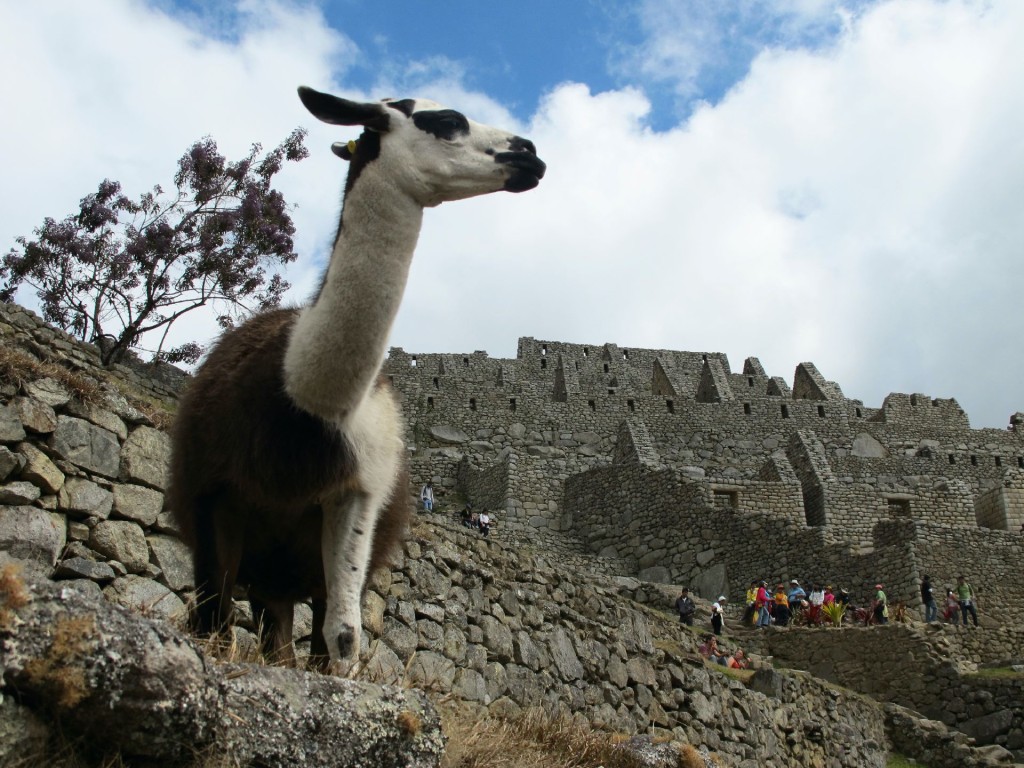 Next day we took the early morning bus, at 6 AM, up to Machu Picchu. We were just in time to enjoy the sun rising over the mountains, although it was rather foggy. Together with a guide, we made a walking tour through this mysterious city, after which we had time to explore the site by ourselves. Unfortunately, after an hour or so the place was already overcrowded with foreign tourists and this somehow spoiled the impression I had the day before.
Next day we took the early morning bus, at 6 AM, up to Machu Picchu. We were just in time to enjoy the sun rising over the mountains, although it was rather foggy. Together with a guide, we made a walking tour through this mysterious city, after which we had time to explore the site by ourselves. Unfortunately, after an hour or so the place was already overcrowded with foreign tourists and this somehow spoiled the impression I had the day before.
From the guide we learned that Machu Picchu was declared UNESCO World Heritage site in 1983 and the Peruvians consider it a sacred place. We visited the primary buildings, built in Inca style with polished dry-stone walls: Intihuatana (Sun Dial), the Temple of the Sun, and the Room of the Three Windows, located in the Sacred District. Llamas were walking over the steep terraces that obviously served to keep the soil together, or maybe also for agricultural purposes. Can it be true that Machu Picchu had a population of 750 people only? It looks much bigger! But one thing is sure, it was extremely well-hidden.
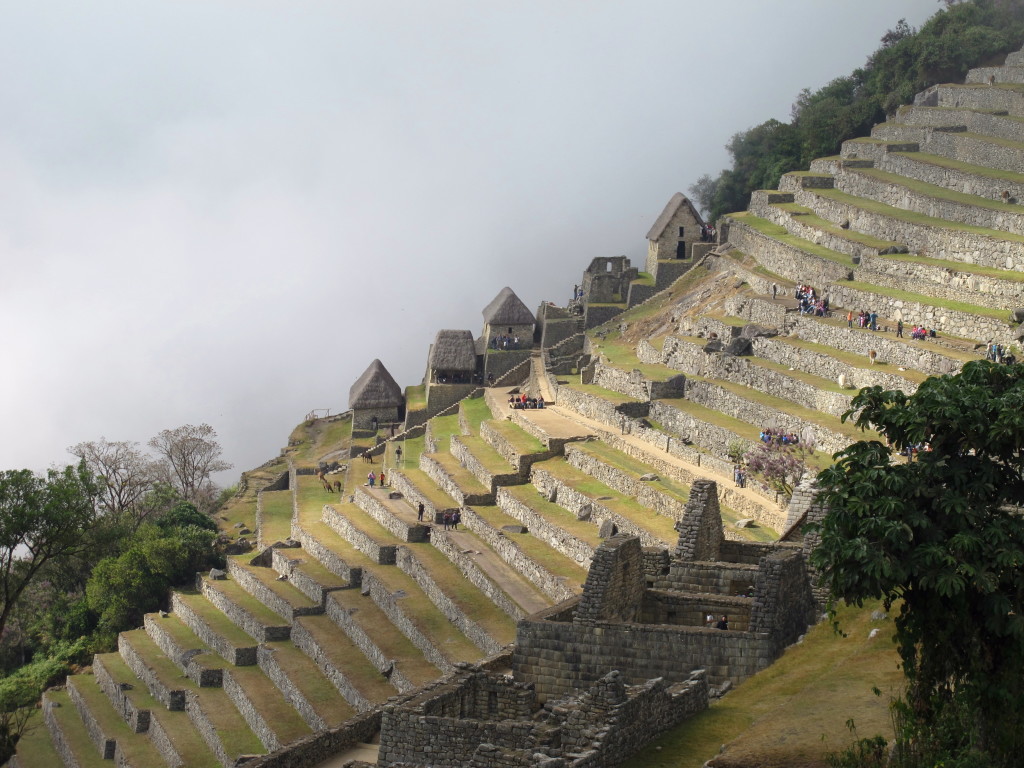 Anyhow, I was fascinated by the question why is Machu Picchu – built 600 years ago – called “The lost city of the Incas?” Well, this was the name of Hiram Bingham’s book on Machu Picchu. He named it as lost city, as even the Spaniards could not find it when they conquered the Inca area! Nobody knows why this city was built and why it was abandoned by the Incas. Bingham, who discovered it, thought that it was Vilicamba, the last Incan capital. But this was not true. Maybe it was a retreat for elite Incas or a religious place, maybe an ancient fortress. Nobody knows. And that is why Machu Picchu is so mysterious…
Anyhow, I was fascinated by the question why is Machu Picchu – built 600 years ago – called “The lost city of the Incas?” Well, this was the name of Hiram Bingham’s book on Machu Picchu. He named it as lost city, as even the Spaniards could not find it when they conquered the Inca area! Nobody knows why this city was built and why it was abandoned by the Incas. Bingham, who discovered it, thought that it was Vilicamba, the last Incan capital. But this was not true. Maybe it was a retreat for elite Incas or a religious place, maybe an ancient fortress. Nobody knows. And that is why Machu Picchu is so mysterious…
On the same day we left Agua Calientas and returned to Cusco. Now, six years later, when I look at the photos, my visit of Machu Picchu seems a dream… But one thing is sure: I will never forget this surrealistic experience and I am very proud of the stamp in my passport: Inca Trail / Macchu Picchu!
